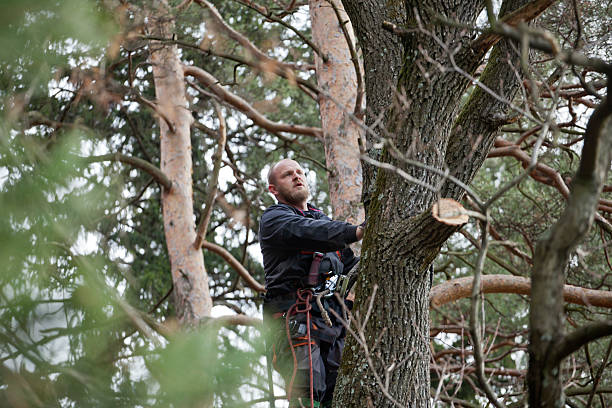When you think about preparing for storm season, tree trimming might not be the first thing that comes to mind, but it should be. Neglecting to trim your trees can lead to dead or weak branches breaking off, causing significant damage to your property. It’s not just about cutting away the obvious hazards; it’s also about fostering the overall health of your trees. By thinning out crowded areas, you ensure better air circulation and reduce the risk of branches snapping under pressure. But how exactly do you identify which branches pose a threat, and what are the best practices for trimming?
Benefits of Regular Tree Trimming
Although it might seem unnecessary, regular tree trimming offers numerous benefits that can’t be overlooked. Maintaining your trees properly ensures a healthier growth pattern, which can lead to stronger, more resilient trees. Healthy trees are less likely to succumb to diseases and pests, ensuring they remain an asset to your property rather than a liability.
Another advantage is the improved aesthetic appeal of your landscape. Well-trimmed trees provide a neat, attractive appearance, contributing to your home’s curb appeal and potentially increasing its value. Plus, regular trimming helps shape the tree, promoting balanced growth and preventing it from becoming unruly or overgrown.
Additionally, tree trimming can enhance air and sunlight circulation, which is crucial for the tree’s health and surrounding plants. Better light and air penetration encourage ground-level plants to thrive, creating a more vibrant garden.
Lastly, it’s a proactive measure to prevent property damage. Overgrown branches can interfere with power lines, obstruct views, or damage roofs and windows. Regular trimming reduces these risks, providing peace of mind and a safer environment.
Identifying Hazardous Branches
When it comes to ensuring the safety of your property, identifying hazardous branches is crucial. You must be vigilant about branches that could pose a risk during a storm. Look for cracked, dead branches or showing signs of decay. These are more likely to snap and cause damage to your home or other structures.
Pay attention to branches growing too close to power lines or your roof. If they break off during strong winds, they can cause significant damage. Also, watch for branches rubbing against each other, as this can weaken them over time, making them more prone to breaking.
Another indicator of a hazardous branch is its angle. Branches that grow at a sharp angle from the trunk are more susceptible to breaking than those that grow at a wider angle. Also, watch for branches with heavy foliage, as the added weight can increase the risk of breakage, especially when wet from rain.
Best Practices for Tree Trimming
Proper tree trimming isn’t just about aesthetics; it’s about ensuring the health and safety of the tree and your property. First, always use the right tools. Sharp, clean pruning shears or saws help make precise cuts, reducing disease risk. Aim for a clean cut just outside the branch collar when cutting branches. This allows the tree to heal faster and keeps it healthy.
Next, focus on removing dead or diseased branches first. These are the most likely to fall during a storm. Also, thin out crowded areas to allow wind to pass through more efficiently, reducing the chance of branches breaking. Avoid topping trees, which are cutting off the top of the tree. It leads to weak growth and can make the tree more susceptible to storm damage.
Don’t forget about timing. The best time to trim trees is during their dormant season, usually late winter or early spring. This minimizes stress and allows for better recovery. Lastly, if a branch is near power lines or too large to handle safely, don’t hesitate to call a professional. Safety should always come first in tree trimming practices.

